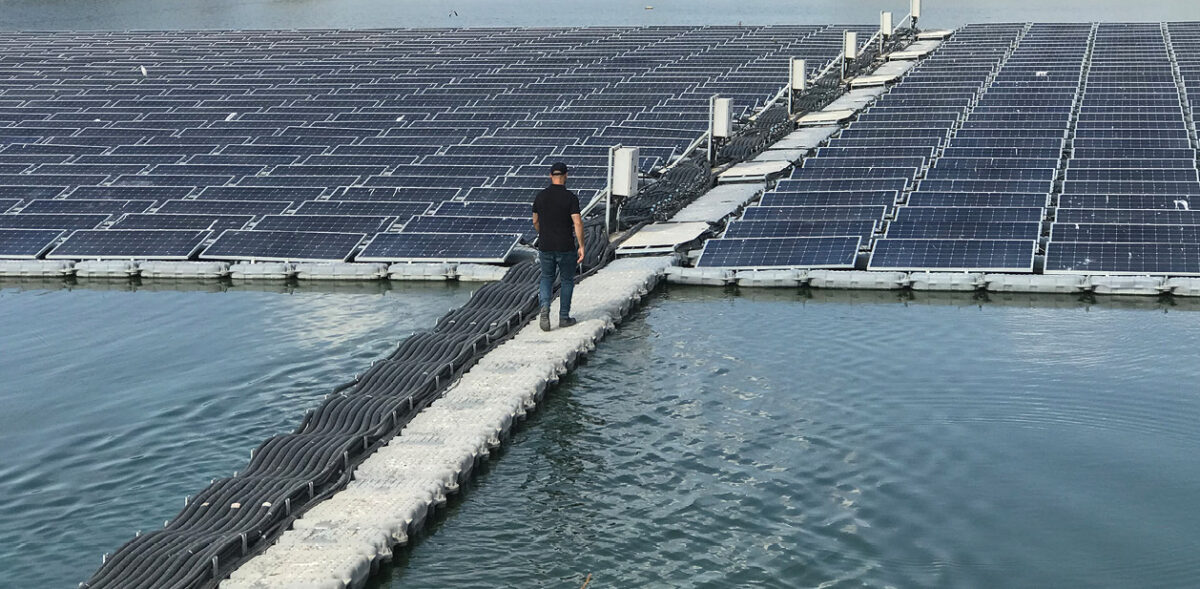Christian Breyer, a solar economy professor at Finland-based LUT University, told pv magazine that if the Caribbean and its 13 countries seized on the right opportunities, the region could become a “global center” for offshore floating solar PV energy generation.
“Land-based PV systems will be developed first. However, the substantial electricity demand may lead to limitations in land availability, which can be overcome by offshore floating PV,” he said.
Breyer recently co-authored a paper exploring the potential of solar PV in the Caribbean’s chain of islands. The paper investigates various renewable energy generation methods with a special focus on the efficacy and levelized cost of electricity (LCOE) of offshore floating PV arrays in Puerto Rico.
Puerto Rico, a North American territory that consumes almost 70 times more energy than it produces, aims to power its hurricane-impacted electricity grid with only renewable energy by 2050.
According to the research, however, both the wider Caribbean region and the island of Puerto Rico are lagging in renewable energy capacities. Puerto Rico recorded 841 MW installed total renewable energy capacity in 2022, with 639 MW comprising solar PV, according to the most recent data published by the International Renewable Energy Agency (IRENA).
The paper posits that as the Caribbean has limited available land, offshore floating PV should be considered. After examining multiple renewable energy generation scenarios, the paper states: “The results for Puerto Rico clearly indicate the enormous benefits of reaching 100% renewable energy, as the levelized cost of electricity (LCOE) can be reduced from more than €10o ($106.2)/MWh in 2020 to €47.4 MW/h in 2050.
“The dominating source of energy for electricity supply and the entire energy system is found to be solar PV with 80% and 91% of supply share in Puerto Rico and the Caribbean, respectively,” the researchers said in the paper. “When limited offshore land availability is applied, a substantial share of all PV generation can be provided by offshore floating PV for minimal extra costs.”
When asked how feasible floating solar PV actually is in the region, he said onshore floating PV is “standard” while offshore floating PV solar arrays have been developed in “various regions around the world”.
The International Solar Energy Society forecast that regions that don’t record waves larger than 6 m or winds stronger than 15 m/s could generate up to one million TWh per year through offshore floating PV arrays.
Onshore and offshore solar PV floating projects, however, come with their own technological challenges.
“The special conditions in the Caribbean with hurricane risk require special consideration of regions with better natural storm protection,” Breyer said. “I would assume that somehow stronger structures should be used, while the more protected areas will be the most important aspect. Onshore PV systems have to be also hurricane proof, thus, that may be similar for offshore floating PV systems.”
In the last decade, there have been 20 recorded hurricanes and tropical storms making landfall in Puerto Rico. When Hurricane Maria battered the island in 2017, it took the electricity grid almost 11 months to recover – making it the longest blackout in North American history.
The paper, titled “Role of Solar Photovoltaics for Sustainable Energy System in Puerto Rico in the Context of the Entire Caribbean Featuring the Value of Offshore Floating Systems,” was published in the IEEE Journal of Photovoltaics.
This content is protected by copyright and may not be reused. If you want to cooperate with us and would like to reuse some of our content, please contact: editors@pv-magazine.com.








What about hurricanes?
I know that RMI has a two-part design guidebook for land based resilient photovoltaic systems.
Link: https://rmi.org/insight/solar-under-storm/
Floating PV installations are a whole new chapter and I am not sure if standards have been developed for floating solar plant.